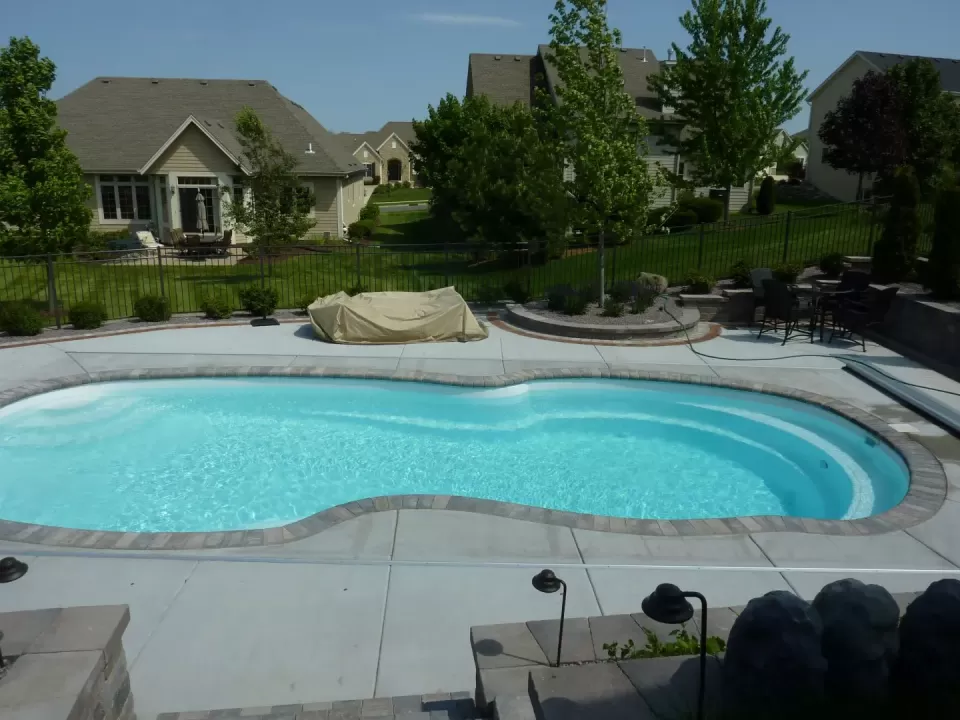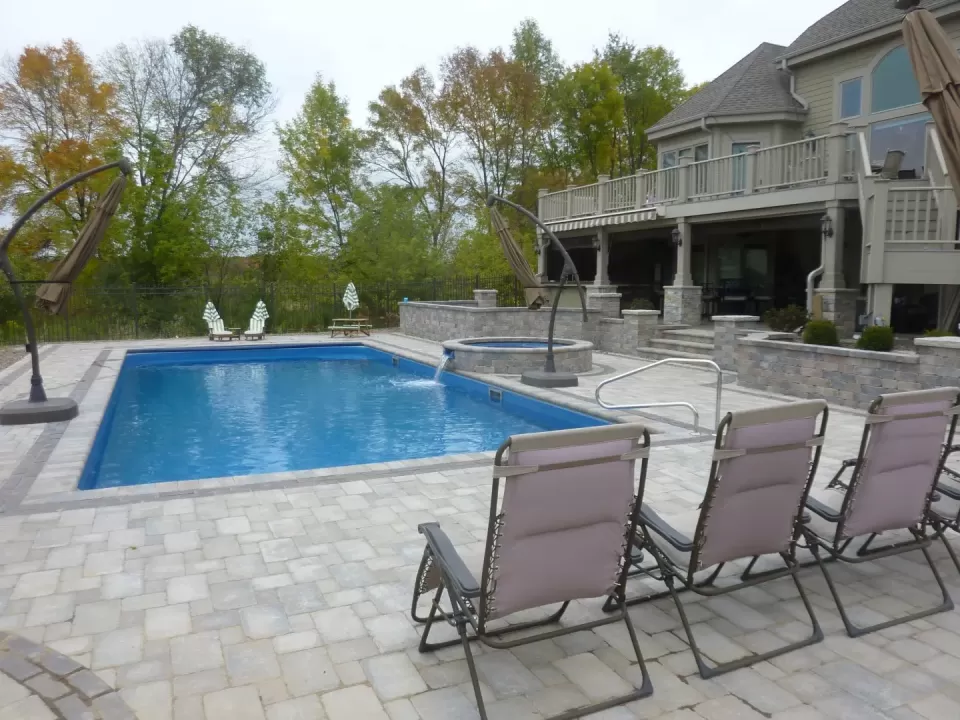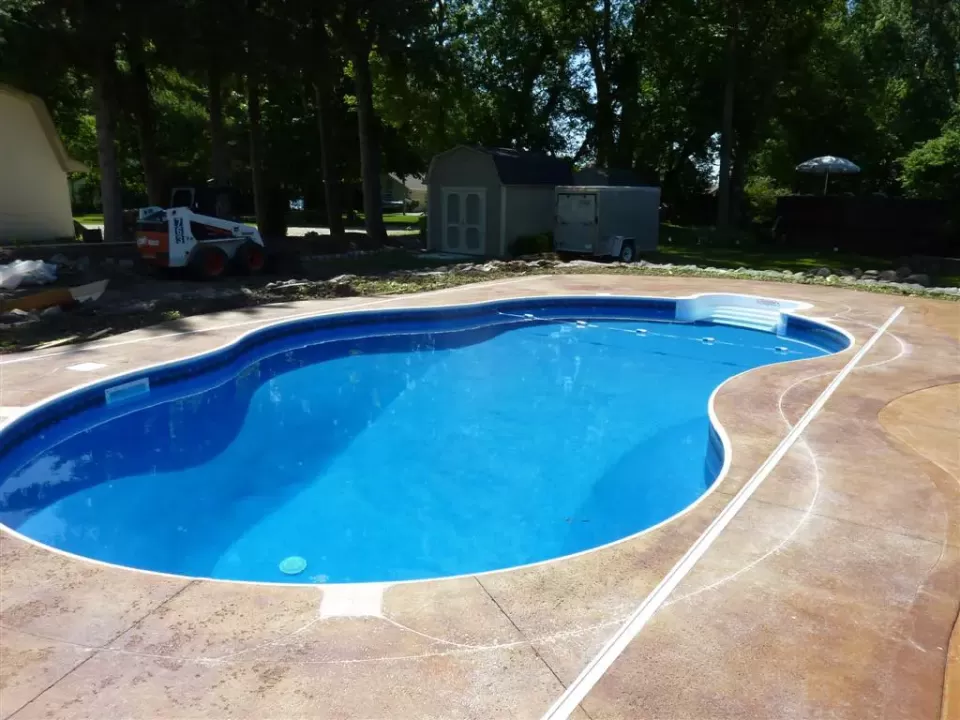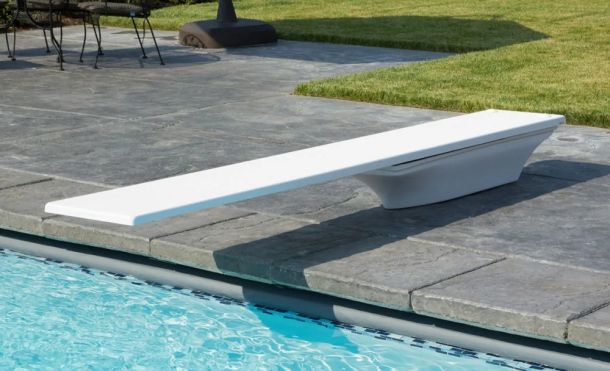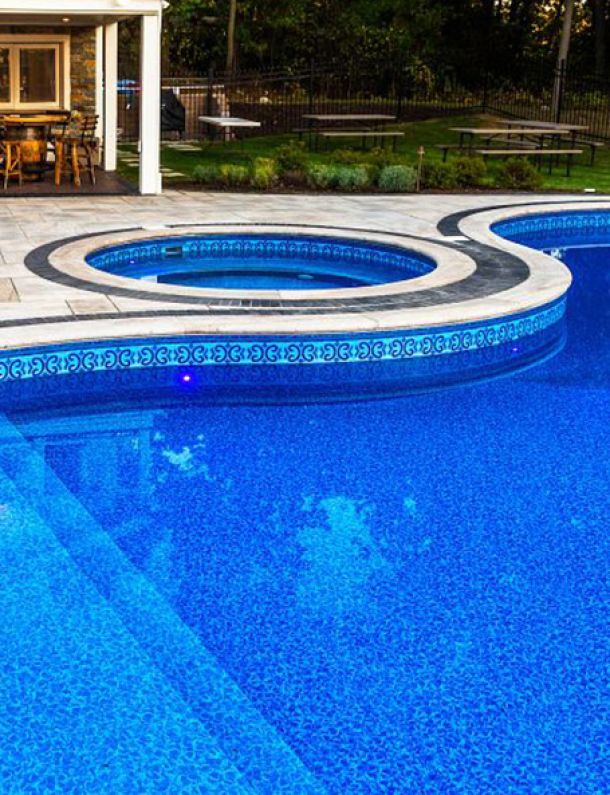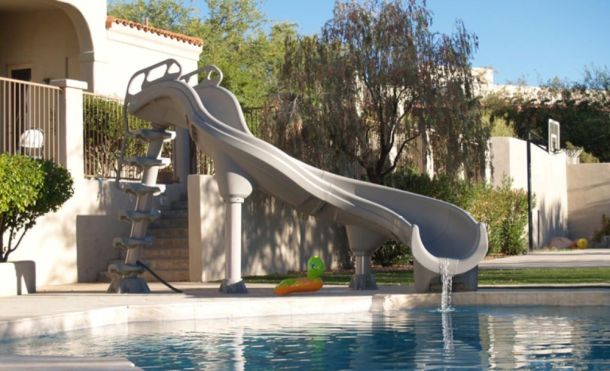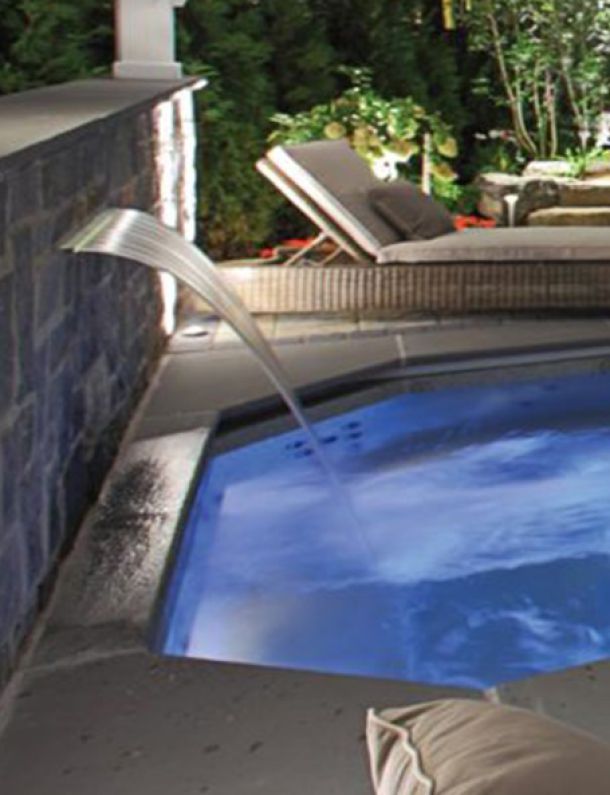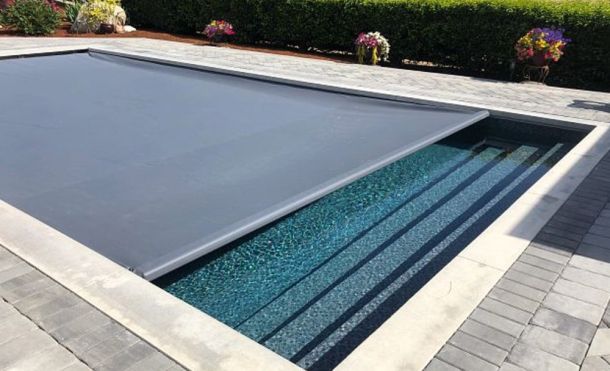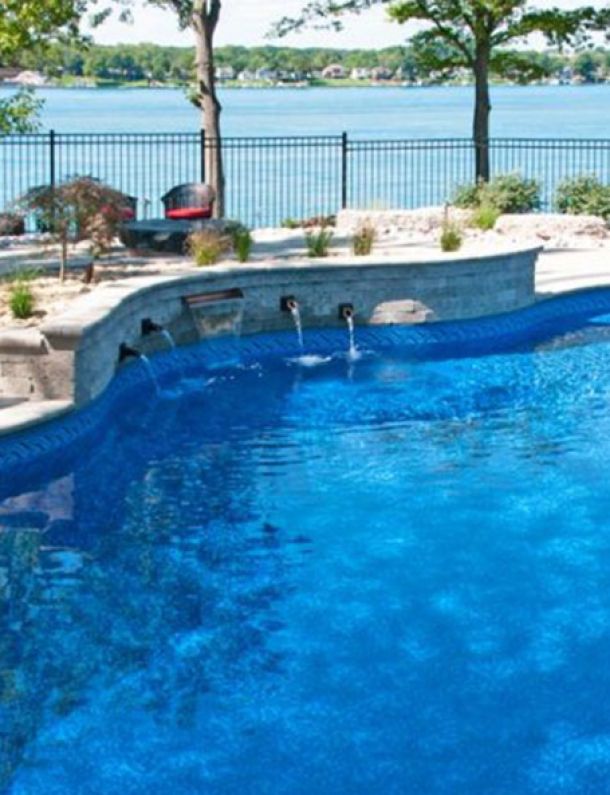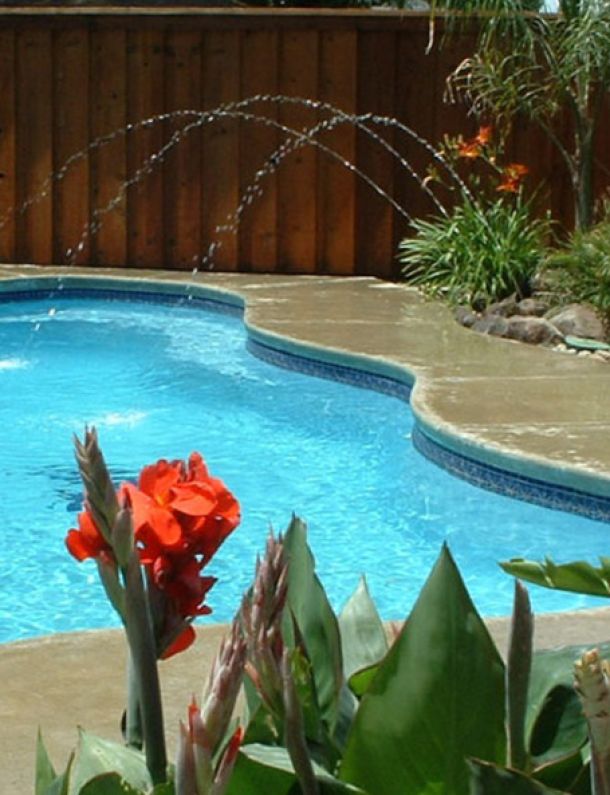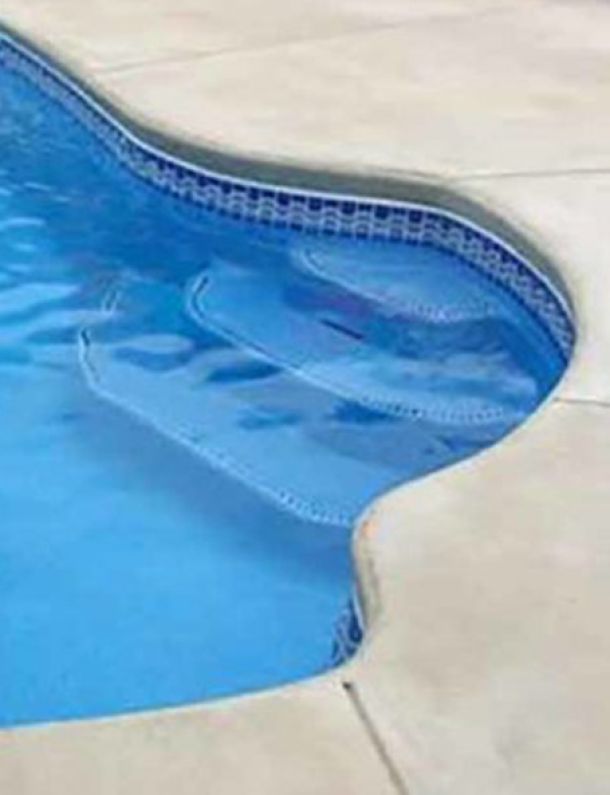Fiberglass vs. Vinyl Liner vs. Concrete Pools
Which Type Is
is Right for You?
The first thing you need to decide is what type of swimming pool you want.
Let's break it down
to simple terms
In-ground pools are so much more than a place to swim; they become the nucleus of your backyard, perfectly suited for endless family fun, from summertime water wars to sophisticated entertaining. An in-ground swimming pool is a valuable and multifaceted addition to your home, providing beauty, enthusiasm, and respite.
To get the very best experience from your new swimming pool, it’s crucial to choose the right type of pool for you and your family, taking into consideration your budget, maintenance, and space.
Pool Costs
Pool cost can be a wide range depending on a number of factors. Out of the three pool options, concrete is the most expensive, compared to fiberglass or vinyl liner pools. Vinyl liner pools are generaly the most economical option, while fiberglass pools cost more for the same sized pool, depending on what specifications you would like. Whereas concrete pools are on average twice the cost of a fiberglass or vinyl liner pool.
Longevity and Durability
Materials can influence the lifespan of your pool. Fiberglass pools are renowned for their long-lasting quality and can remain in good condition for the entire duration that you live in the house. Similarly, vinyl liner pools can also last a lifetime, but the liner may need to be changed about every decade to get a new appearance. Concrete pools may persist for decades, but it necessitates frequent maintenance such as acid washing and resurfacing every 10 years, which is costly.
Design Options
You can choose from a number of pool shapes including the traditional rectangle or a freeform or oasis pool. Beyond the look and feel, you can customize your pool by adding an auto cover, spill-over-spa, salt water sanitation, outdoor grill, and more.
Safety and Regulations
Proper pool safety is important to protect your loved ones. Every town, city and county has a specific building code for swimming pools that require homeowners with pools to have proper fencing, gates, covers and swimming pool alarms to prevent accidents from happening. These requirements may also influence the total cost.
Pool Building Timeline
Fiberglass pools have many advantages over alternatives. Unlike other pools, fiberglass pool installation can be accomplished quickly. Homeowners that purchase a Latham fiberglass pool will be luxuriating in their brand-new pool within two to three days after delivery, regardless of the size or shape of the pool itself.
Key Takeaways
Which Pool Type is Better for You?
Having a pool in your backyard can provide great pleasure and leisure for many years to come. Deciding which sort of pool is best for you comes down to what matters most in regards to your backyard pool experience. Looking at the advantages and disadvantages can aid you in selecting the ideal pool material, improving both recreation and relaxation from your pool over its lifetime.
*Installation costs based on national average selling and installation pricing. Actual costs depend on various factors, including location of service, pool model and options selected. Please consult with your Penguin Pools Design Team for a accurate estimate.
Average Costs to Install Inground Swimming Pools & Covers
When you install an inground swimming pool in your backyard, you're not just making an investment to upgrade your living space - you're creating memories that are priceless. On average, a backyard renovation ranges from $100k - $140k and may even be higher depending on the scope of the project. Plus, with the addition of your pool, your home's resale value can increase by approximately 7%, compared to similar homes without pools in the area. Not only will you turn heads when people come over to enjoy your pool during warm summer days - you'll also gain bragging rights for having added value to your home!
Make Your Pool as Unique as You
If you want to both swim and exercise in your pool but also relax in your backyard, look no further than tanning ledges as the ideal spot to lounge on summer days. With therapeutic features such as spillover spas, you will enjoy your time spent at the pool much more. If you're willing to invest a bit, these fun features can add a lot of value. Still unsure which type of pool material is the best choice for you? Take a look at our resource that outlines the pros and cons of fiberglass, vinyl and concrete pools - it might just help you out!
